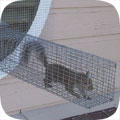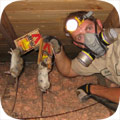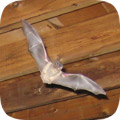- honolulu@wildlifeanimalcontrol.com
Call 24/7 for a free quote:
808-201-2118
Honolulu Wildlife Animal Control
Professional Wildlife Removal Company Servicing Honolulu, HI
If you have a problem with wildlife in your Honolulu home, your best option is to hire a company that specializes in Hawaii wildlife removal only. This is a specialty business, and regular pest control companies do not use the proper techniques to solve animal problems. I have spent many years reviewing Hawaii and Honolulu, and I recommend the following:
Wildlife Removal Hawaii
Cell Phone: 808-201-2118
NOTE: If you have a dog or cat problem, call Honolulu County Animal Services: 808-946-2187

Wildlife Removal Hawaii specializes primarily in removing animals from attics of homes and buildings - this includes squirrels in attics, raccoons, and rats or mice in homes. Hawaii also has a documented problem with
bats in buildings, and Wildlife Removal Hawaii is specially trained in bat removal. They also perform general wildlife trapping services, such as the capture and removal of skunks or opossums on the
property. Call 808-201-2118 to discuss your critter problem and schedule a same-day or next-day appointment. Click here to learn more about what prices we charge in 2020.
When hiring a company to solve your wild animal problem, you want these features:
- Specializes in wildlife removal, not pest control
- Fully Hawaii and Honolulu County licensed and insured
- Works 7 days per week (critters don't take weekends off)
- Performs full building inspections: enters and inspects attic
- Performs exclusion repairs, with guarantee against animal re-entry
- Offers cleanup of biohazardous wildlife waste
Wildlife Removal Hawaii is a full-service Honolulu wildlife removal company. This is very different from a regular Honolulu pest control company. The pest control companies spray poison to kill insects. This is not at all
similar to wildlife removal. Wildlife Removal Hawaii performs a full inspection of the home or property, and determines why the animal(s) are there, and if inside a building, how the animals got inside. All
animals (including rodents) are trapped and removed, or if possible, removed from the building using special exclusion devices. Once the animals are gone, preventative repairs are essential, and
cleanup is sometimes recommended.
 Honolulu wildlife trapping - it's not as simple as it may seem. It's illegal in Hawaii to trap without a license. Trap type is very important and there are many different types, bait is somewhat relevant, trap placement
is vital, and there are dozens of small things that are very important to know.
Safety is a concern. Then once the animal is trapped, it must be removed and dealt with in the proper manner according to Hawaii law. We offer Honolulu raccoon removal. Read more about how to get rid of raccoons.
Honolulu wildlife trapping - it's not as simple as it may seem. It's illegal in Hawaii to trap without a license. Trap type is very important and there are many different types, bait is somewhat relevant, trap placement
is vital, and there are dozens of small things that are very important to know.
Safety is a concern. Then once the animal is trapped, it must be removed and dealt with in the proper manner according to Hawaii law. We offer Honolulu raccoon removal. Read more about how to get rid of raccoons.
 Animals in attics - this is our specialty at Wildlife Removal Hawaii. Many types of animals like to live in attics. This includes squirrels, raccoons, rats, mice, bats, birds, and even possums. Critters like to go into attics for a safe place to live
and raise their young. Removing animals from attics is very complex work, partly because of the presence of baby animals. If you need Honolulu squirrel removal, we can remove all the squirrels from your attic, and seal out any future ones. Read more about how to get rid of squirrels.
Animals in attics - this is our specialty at Wildlife Removal Hawaii. Many types of animals like to live in attics. This includes squirrels, raccoons, rats, mice, bats, birds, and even possums. Critters like to go into attics for a safe place to live
and raise their young. Removing animals from attics is very complex work, partly because of the presence of baby animals. If you need Honolulu squirrel removal, we can remove all the squirrels from your attic, and seal out any future ones. Read more about how to get rid of squirrels.
 Rodent control must be done in a very specific way. First off, the most important thing is that all the openings that rats and mice can use to enter a house be sealed. Then all the rodents must be physically trapped and removed.
Never, ever use poison! Most Honolulu exterminators will just use this lazy poison technique to kill rodents, and it causes more harm than good - dead stinky rats, and it doesn't solve the problem. Call us for correct Honolulu rat removal. Read more about how to get rid of rats.
Rodent control must be done in a very specific way. First off, the most important thing is that all the openings that rats and mice can use to enter a house be sealed. Then all the rodents must be physically trapped and removed.
Never, ever use poison! Most Honolulu exterminators will just use this lazy poison technique to kill rodents, and it causes more harm than good - dead stinky rats, and it doesn't solve the problem. Call us for correct Honolulu rat removal. Read more about how to get rid of rats.
 Bat removal is a highly specialized task. Hawaii is known to have colonizing bats who often live in buildings. Bats love attics. If not removed, the colony can grow to a very large size over the years. The bat droppings are often corrosive and
cause health risks. The same goes for bird droppings on or in buildings. We perform Honolulu pigeon removal and bird control. But our specialty is Honolulu bat removal. We remove 100% of the bat colony and seal the building so that it's totally bat-proof. Read more about how to get rid of bats.
Bat removal is a highly specialized task. Hawaii is known to have colonizing bats who often live in buildings. Bats love attics. If not removed, the colony can grow to a very large size over the years. The bat droppings are often corrosive and
cause health risks. The same goes for bird droppings on or in buildings. We perform Honolulu pigeon removal and bird control. But our specialty is Honolulu bat removal. We remove 100% of the bat colony and seal the building so that it's totally bat-proof. Read more about how to get rid of bats.
 If you have animals inside a house, no job is complete without proper exclusion repairs. If you simply hire a Honolulu trapper who only removes the critters, then the problem will return. You need to hire a Honolulu wildlife control company that identifies 100% of the animal entry points
into your building, and seals them shut with professional repairs. In addition, in many cases animals have left waste or contamination behind, and you'll want a company that can provide professional cleaning services. Wildlife Removal Hawaii does both.
If you have animals inside a house, no job is complete without proper exclusion repairs. If you simply hire a Honolulu trapper who only removes the critters, then the problem will return. You need to hire a Honolulu wildlife control company that identifies 100% of the animal entry points
into your building, and seals them shut with professional repairs. In addition, in many cases animals have left waste or contamination behind, and you'll want a company that can provide professional cleaning services. Wildlife Removal Hawaii does both.
The above are just some of the services offered by Wildlife Removal Hawaii. We also trap and remove animals that destroy lawns, such as moles, or digging animals. Sometimes animals like opossums will live under buildings, steal pet food, raid garbage cans, etc.
Read about how to get rid of opossums. Skunks commonly live under sheds or decks, and set up a den. We can trap and remove them without them spraying. Read about how to get rid of skunks. Wildlife Removal Hawaii
also provides dead animal removal in Honolulu. If you need help with any other wildlife conflict, from a fox, beaver, groundhog, or any other critter, we can solve it. We also do Honolulu snake removal - most of the snakes in Hawaii are not venomous, but
call us if you want safe removal, or read about how to get rid of snakes in Honolulu. And remember, we are a private business, not Honolulu County Animal Control Services, so if you have a dog or cat problem, call the County at 808-946-2187.
Honolulu County animal services does not handle any wildlife issues.
Wildlife Removal Hawaii: 808-201-2118
Honolulu Pricing Info For Year 2020
 Every wildlife removal situation is different, from the species of animals involved, the location of the animal inside a house or outside, the extent of repairs or cleanup, etc. It's impossible to give one-size-fits-all prices. Examples MIGHT include:
Every wildlife removal situation is different, from the species of animals involved, the location of the animal inside a house or outside, the extent of repairs or cleanup, etc. It's impossible to give one-size-fits-all prices. Examples MIGHT include:
Small Job: For example, a one-stop job to remove an animal in the yard: $100 on up
Medium Job: For example, getting critters out of your house with minor repairs: $300 on up
Large Job: For example, a project involving many service trips and complex work: $500 on up
Give us a phone call now and tell us about your wildlife issue and we will be able to give you a price estimate over the phone. If you're cool with it, we can schedule a same-day or next-day appointment if you like. Our prices are fair, and a good value because we do the job right, the first time.
Honolulu Wildlife Tip #1:
What time does nocturnal wild animal go out to get food? - In order to effectively remove the nocturnal wild animal problem from your house, let's say for example, it's currently claiming squatter's rights in your attic, you must have some useful bits of information. These animals are smart - they have been around since the age of the dinosaurs after all! One of the most useful things that you can learn about the nocturnal wild animal is the time at which they go out to feed - this will essentially better help you to set traps, figure out when to block entrances and exits, and generally start on your plan to remove the annoying creature from your attic. Take a look at the sounds that you hear noise from the nocturnal wild animal - it's usually when you are in bed. This gives you some idea of when they are most active. They are nocturnal creatures by nature, although they are venturing out in daylight hours more and more these days, especially as they seem to becoming rather used to people and rural living. However, you will often find that your friendly nocturnal wild animal will wake up at around 9pm, potter out to work, (as in search for food) at around 9/10pm, and then head home for a good night's sleep at around 4am. This gives you plenty of time to block exits, work out where they are getting in and out from and set traps in the right areas. Your main priority at this time may be evicting the nocturnal wild animal completely from your property, but in actual fact by doing this, you are just encouraging other nocturnal wild animals and wild animals to come running. Rather than looking at getting rid of the animal completely, why not consider placing a nest box at the end of your yard? This gives the animal somewhere that it is "allowed" to live, and it will help remove the problem from your attic at least!
Honolulu Wildlife Tip #2:
Trapping Wild animals Tips - One of the first things to do when trying to trap an wild animal is to examine the area where it is causing the problem and to see where it is most active and whether there is one point that it is using repeatedly. If there is a weak point in the fence where it is getting through or a hole that it is going in and out of, this is often a good place to locate the trap. It is also frequently possible to look at signs in the soil itself to choose where to place the trap, as wild animals do have large claws that leave significant tracks in the dirt. As well as the importance of the location of the trap, another thing that can help catch the wild animal successfully is to use wooden boards or wire mesh to help guide the wild animal into the trap. Some wild animals that have become cage shy will often avoid these unless there is no option but to go into the trap. Bait can also be very helpful for those who are trying to catch an wild animal, with worms and maggots being attractive to wild animals, along with spoiled meat and fruit also being quite successful.
Hawaii Wildlife Information:
Hawaii State bird: Hawaiian goose
State mammal: Hawaiian monk seal
State fish: Humuhumunukunukuapua?a
State insect: Kamehameha butterfly
Hawaii isn't just a tourist trap. The white, sandy beaches and clear tropical waterfalls are a good representation of the entire island chain. The Hawaiian Islands really are the backdrop to a modern-day paradise. The landscape is rocky yet fertile, the result of thousands of years of volcanic activity. Because the state was never attached to the mainland, simply created by erupting volcanoes, the animals on the islands came by land or by water-there was no other way. As expected, this means the variety of island animals is minimal, and much of the "wild" population was at one time domestic. Hawaii is one of the only places where rabies has not yet wreaked havoc. The islands have been free of the deadly virus and maintain extensive protocols and quarantine phases for any animals brought over from the mainland. Because Hawaii is so unique compared to the rest of the United States, the taking of flora or fauna to and from the region is strictly prohibited.
There are no large carnivores on the islands. In the water, it's a different story, but terrestrial animals do not have the size or the bulk of animals in the other states. Currently, Hawaii's carnivores consist of wild dogs, wild cats, monk seals, elephant seals, and the mongoose. The mongoose, which is an extremely intelligent creature, is one of the only animals willing to take on a venomous snake in direct battle. Because of this ability and immunity to venom, many people in snake-endemic areas kept the mongoose as a house pet. The species is now outlawed in the rest of the country due to its invasive nature and ability to wipe out entire populations of serpents.
Grazing animals on the Hawaiian Islands are larger than the predators, and consist mostly of animals that were at one time domestic. The island has herds of wild cows, wild sheep, wild donkeys, and wild boars. It also has axis deer and mule deer.
Pest animals in Hawaii tend to be of the rodent persuasion. Rats are the number one nuisance animal on the islands, and they continue to be brought over on boats, even during the modern age. If a homeowner is lucky enough to avoid rats, there are still house mice in the region, a less-obvious but equally destructive home invader.
You can always call Wildlife Removal Hawaii, any time of day, at 808-201-2118, for a price quote for Honolulu wildlife control services. I am confident that this is the best choice amongst wildlife removal companies in Honolulu, HI.





































